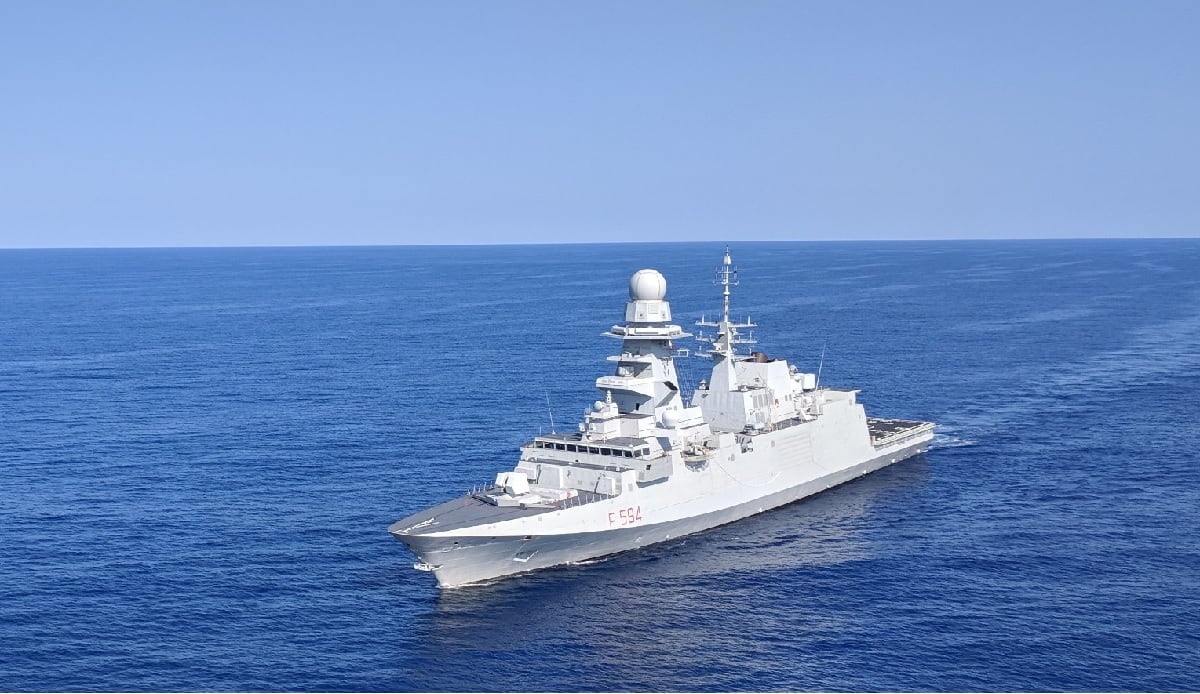WASHINGTON — The U.S. Navy intends to get much bigger, and that has meant new openings for European companies in the U.S. defense market.
The Navy’s new over-the-horizon missile destined for the littoral combat ship and the future frigate was recently awarded to the Norwegian firm Kongsberg, in partnership with U.S. company Raytheon, for its Naval Strike Missile.
The future frigate program itself has awarded contracts to Spain’s Navantia and Italy’s Fincantieri for design work before the Navy selects a design later this year, meaning the service’s next surface combatant may be a European design. And for the Navy’s future training helicopter, both Franco-Dutch company Airbus and Italian firm Leonardo are top competitors for that program.
Analysts say the Navy’s recent surge in interest has been spurred by a confluence of circumstances that could mean even more opportunities for foreign companies looking to break into the U.S. market.
RELATED

Increased defense budgets are one reason the European companies have been seeing more business from the Navy and other American military branches. But a shift in the way the Defense Department tries to fill capabilities gaps has made the space more competitive for overseas firms, said Dan Gouré, a defense analyst with the Lexington Institute think tank.
As the Navy and other services have shifted toward great power competition, it has found a number of capabilities that were not hugely important in a unipolar world have again become requirements with the reemergence of Russia and the rise of China as security threats. One such area is the small surface combatant, or FFG(X) program, which would be needed to escort supply convoys and work as a survivable sensor node in a larger surface combatant network.
“With the frigate, for example, we hadn’t built one of those in 40 years, but the Europeans have been building them for decades,” Gouré noted. “And if we needed a diesel-electric sub, they’d of course be the first in line.”
This emphasis on speed of acquisition has also helped because the Navy and the rest of the Department of Defense are reluctant to get tied down by a yearslong, inevitably over-budget development process unless necessary, Gouré said.
“The trend has been toward [other transaction authority] contracts, and that has made the European companies credible competitors,” he said.
Another factor is that the Navy has been more willing to make trades on capabilities, said Bryan Clark, an analyst with the Center for Strategic and Budgetary Assessments.
“I think what’s new is that the Navy is openly seeking foreign proposals for some of these major new programs,” Clark said. “Foreign companies have always been able to submit proposals in response to RFPs, but usually they don’t offer the high-end capability the U.S. is usually seeking.
“The big change is that the Navy is willing to get a less-sophisticated capability in to get a design that is more mature.”
In the case of the Navy’s trainer helicopter competition, past success with European companies inside the DoD could be a driving factor in Airbus' and Leonardo’s competitive bids.
Airbus’ North American division has been successful with the U.S. Army’s Lakota program, built by Airbus Helicopters in Columbus, Mississippi, which is where the company would build its H135 helicopter if selected for the program. The Army has been happy with Lakota, so much so that it has been pushing to buy more of the airframes despite legal battles over the contracts.
But the success of Airbus Helicopters with the Army is possible for much the same reason that, for example, Australian-owned Austal USA has been successful building both the trimaran version of the littoral combat ship and the expeditionary fast transport: a major manufacturing infrastructure investment in the United States.
And that kind of cash outlay for a program can scare away European competitors. Getting around “Buy American” provisions would literally take an act of Congress. Despite having already developed, tested and fielded the capability the Navy wants, Kongsberg had to team with American defense giant Raytheon to sell its missile to the DoD.
The “Buy American” provisions laid down and regularly upheld by Congress for defense procurement does have protectionist overtones, but there is a national security argument as well. In the event of a major, protracted conflict with Russia or China, it wouldn’t be advantageous to have major suppliers located an ocean away or in occupied territory.
And maintaining the industrial base has long been a concern of the U.S. Navy because of the limited the number of trained workers with experience who are building ships and nuclear reactors.
Navy officials have testified that the shrinking industrial base, including the shipbuilders and the litany of subcontractors and vendors, is a significant concern. In 2015, then-head of the Navy’s research, development and acquisition office Sean Stackley testified before Congress that some of the shipyards were just a contract away from going under.
“We have eight shipyards currently building U.S. Navy ships. And of those eight shipyards, about half of them are a single contract away from being what I would call ‘not viable,’ ” Stackley told the Senate Armed Services Committee. “In other words, the workload drops below the point at which the shipyard can sustain the investment that it needs to be competitive and the loss of skilled labor that comes with the breakage of a contract.”
David B. Larter was the naval warfare reporter for Defense News.








